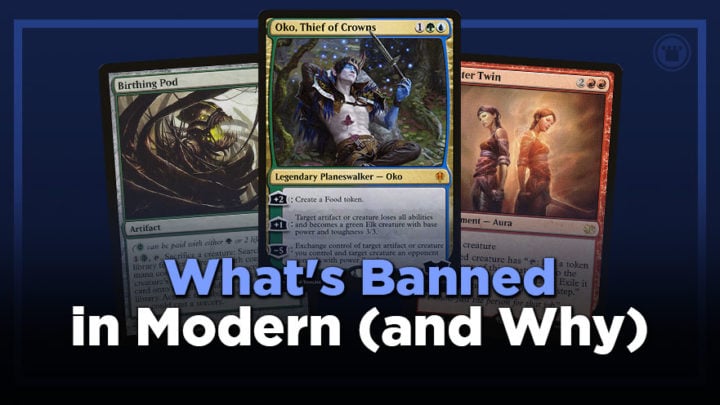Modern recently celebrated its 10th anniversary, and that got me reminiscing about my time playing the format. Decks came and went, metagames evolved, new cards entered the format. But we’ve also seen many cards leave the format over the years as the Modern banlist has grown and changed.
If you’re newer to Modern, you may not be familiar with the banlist or the cards on it. Today, I’m here to break down what’s banned in Modern and why.
We’ll be breaking these banned cards down into five major categories:
- Cards on the initial Modern banned list
- Fast mana
- Cards that are easily broken
- Cards with excessively high power level
- Cards that add too much consistency
The Initial Modern Banned List
When Modern was created in August 2011, several cards were “pre-banned” to curate the format in its early days. The original banlist consisted of 21 cards, six of which have since been unbanned. The remaining 15 are as follows:
Ancient Den, Great Furnace, Seat of the Synod, Tree of Tales, Vault of Whispers
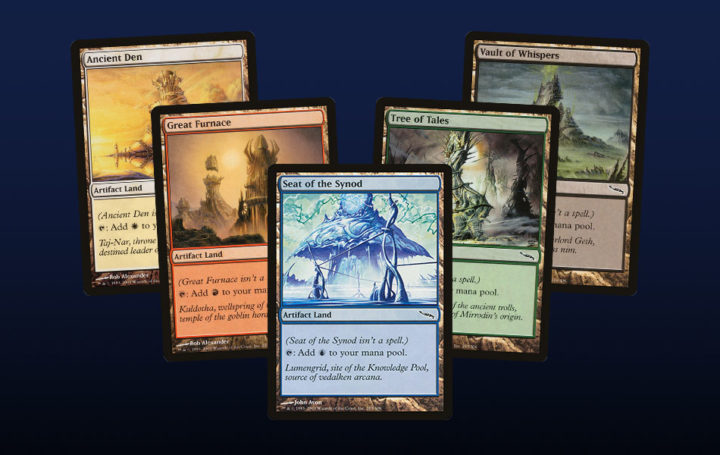
Ancient Den, Great Furnace, Vault of Whispers, Tree of Tales, and Seat of the Synod make up the Mirrodin cycle of artifact lands. Wizards was justifiably cautious by keeping these out of Modern, as Affinity was one of the best decks during its time in Standard. These lands would have turbo-charged the already blazing fast Affinity deck featuring Arcbound Ravager and Cranial Plating.
Chrome Mox
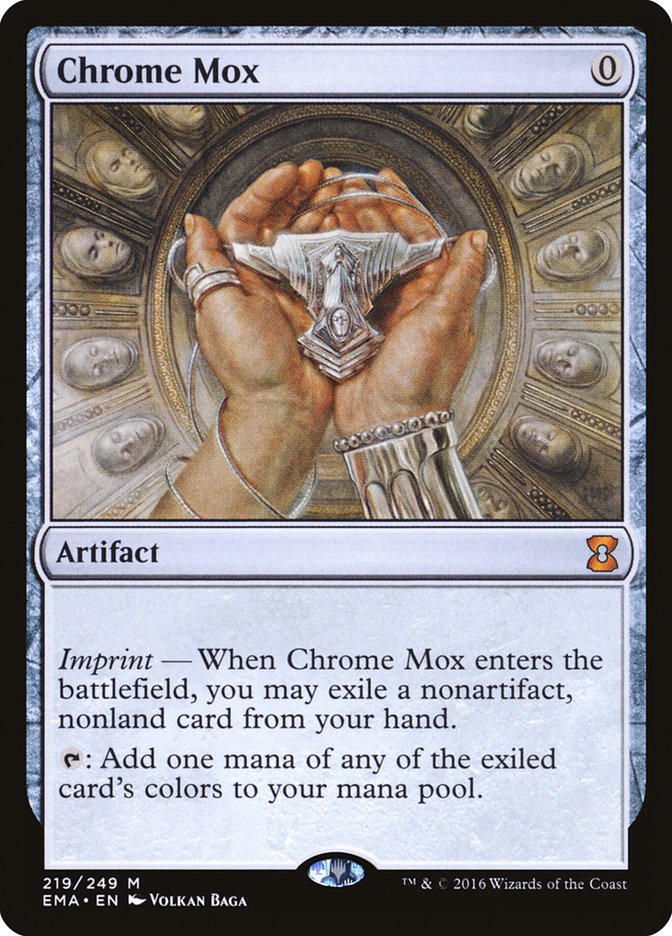
Chrome Mox has a couple strikes against it: it’s a zero-mana artifact and a zero-mana accelerant. It was and is a mainstay in Legacy combo decks, and assuredly would have enabled similar decks in Modern.
Dark Depths
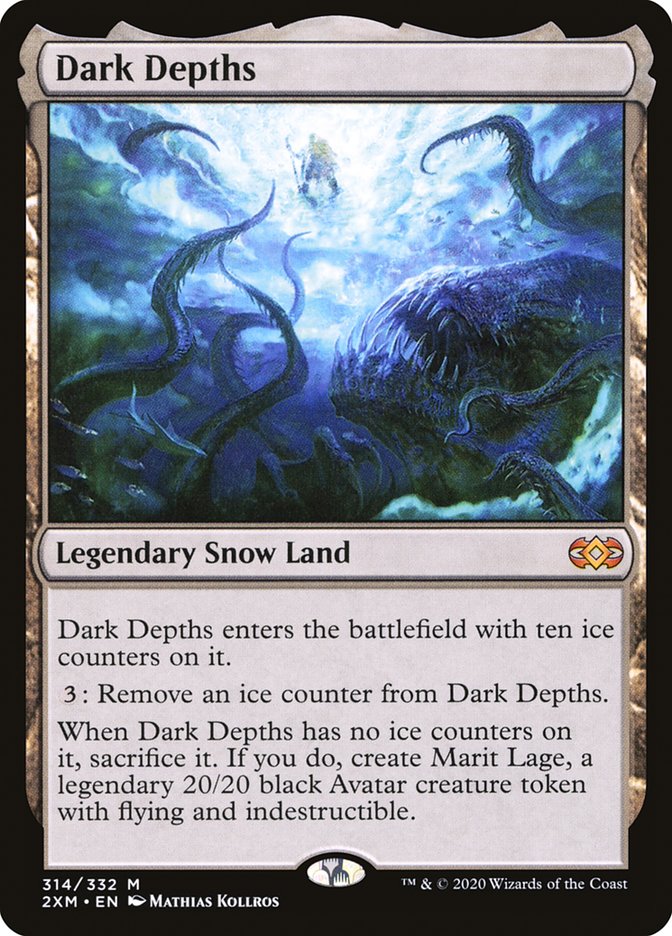
Dark Depths is another card with a strong Legacy pedigree. Combine this land with either Vampire Hexmage or Thespian’s Stage and you’ll get a flying, indestructible 20/20. While Crop Rotation has never made its way into Modern, Knight of the Reliquary could easily find the combo.
Dread Return
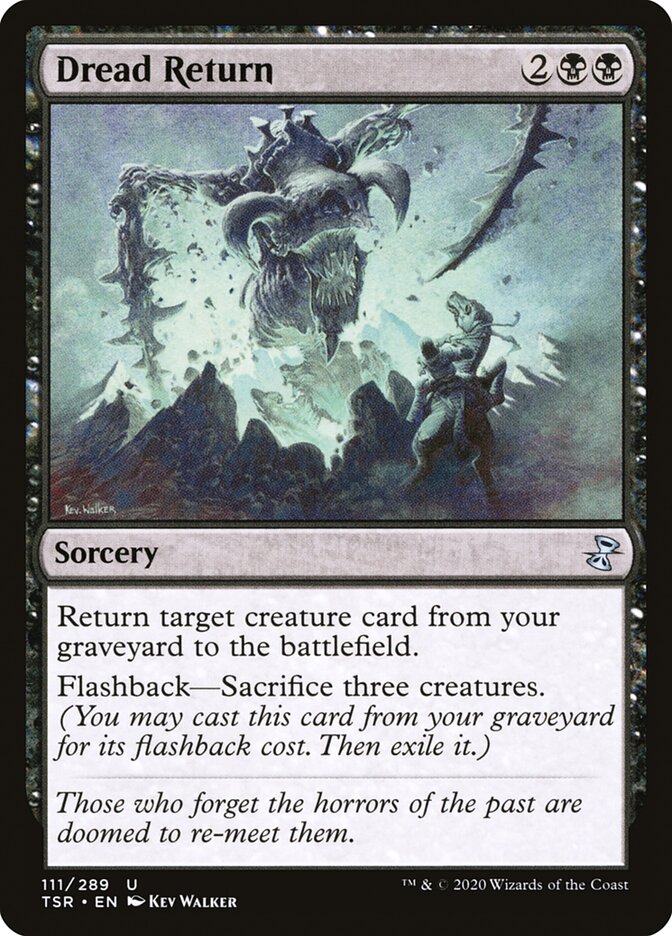
The Legacy-level combo cards keep coming. Dread Return has been the lynchpin of Dredge decks in Legacy for a number of years. Wizards chose to keep Dread Return out of Modern, and that decision seems to have paid off; Modern Dredge has been powerful enough without this all-star enabler.
Glimpse of Nature
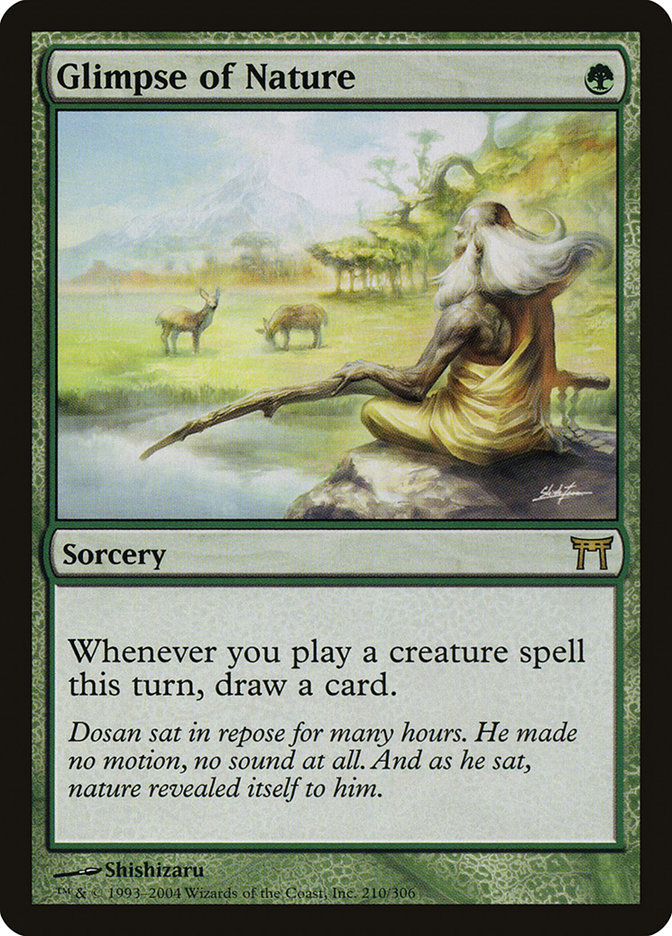
Glimpse of Nature keeps the Legacy combo train rolling. Elves is the natural home for Glimpse of Nature — the deck has tons of cheap creatures and can make a boatload of mana. In these decks, Glimpse of Nature is effectively Ancestral Recall, which is much too powerful for Modern.
Golgari Grave-Troll
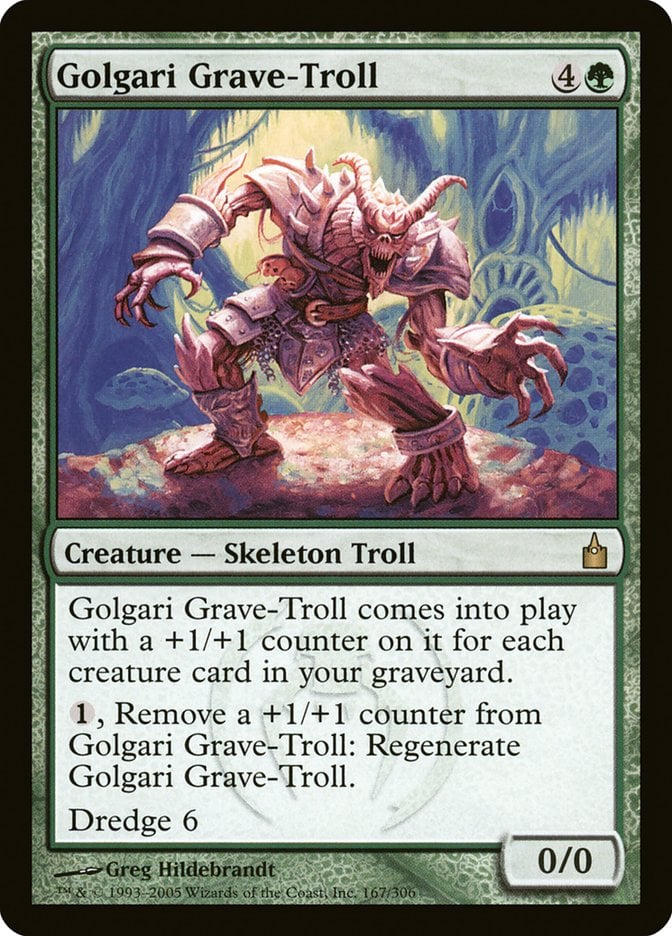
Golgari Grave-Troll, like Dread Return, is a Legacy Dredge mainstay. It basically doesn’t matter what other text is on a card with “Dredge 6” on it; in Modern, Golgari Grave-Troll is castable in a prolonged game. Of note, Grave-Troll is the only card on the original banlist that was unbanned and then banned again. When Cathartic Reunion was printed in Kaladesh, Dredge became far too powerful, and in January 2017, Grave-Troll rejoined the banlist.
Hypergenesis
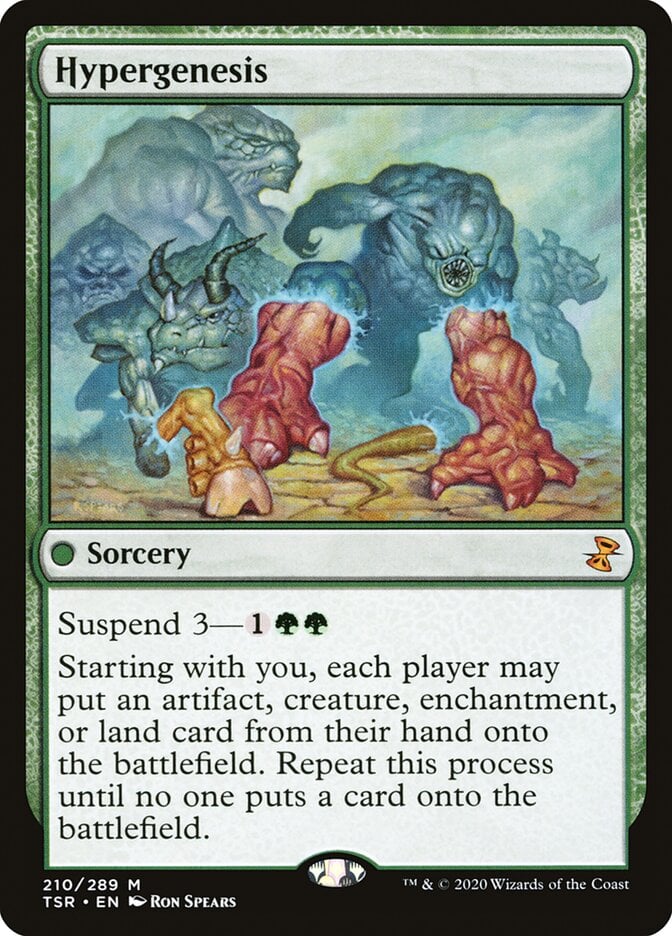
Living End is one of the stronger combo decks in Modern. Hypergenesis is like Living End, but better. They’re both spells that work best with cascade (which isn’t much of a drawback), but Hypergenesis lets you dump huge creatures from your hand directly into play, no setup required. Hypergenesis was a strong deck in Extended at the time of Modern’s release, so Wizards was understandably cautious about putting Hypergenesis into a format with an ever-growing card pool.
Mental Misstep
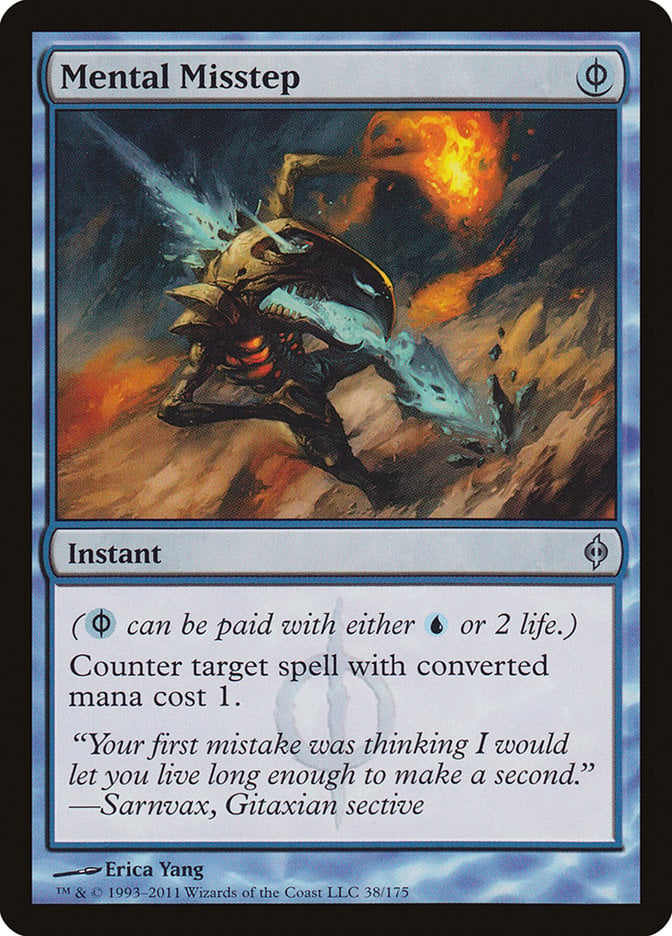
Mental Misstep is simply not a fun or interesting card. One of two things happens: people stop playing one-mana spells to avoid Mental Misstep, or everyone has to play Mental Misstep to beat their opponents’ Mental Missteps. Modern is simply better off without this spell, and Wizards made the right move by starting it off on the banned list.
Sensei’s Divining Top
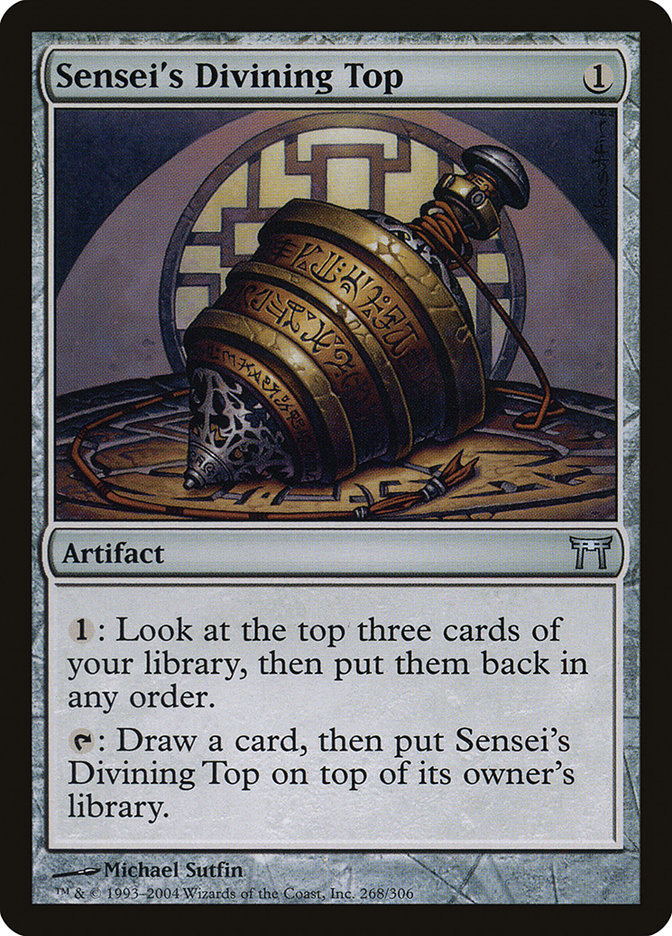
Sensei’s Divining Top provides far too much card filtering for a one-mana card. It also makes games take an extra ten minutes. Avacyn Restored’s miracle mechanic was coming down the pipe nine months after Modern’s inception, so perhaps this was a bit of foresight on Wizards’ part.
Skullclamp
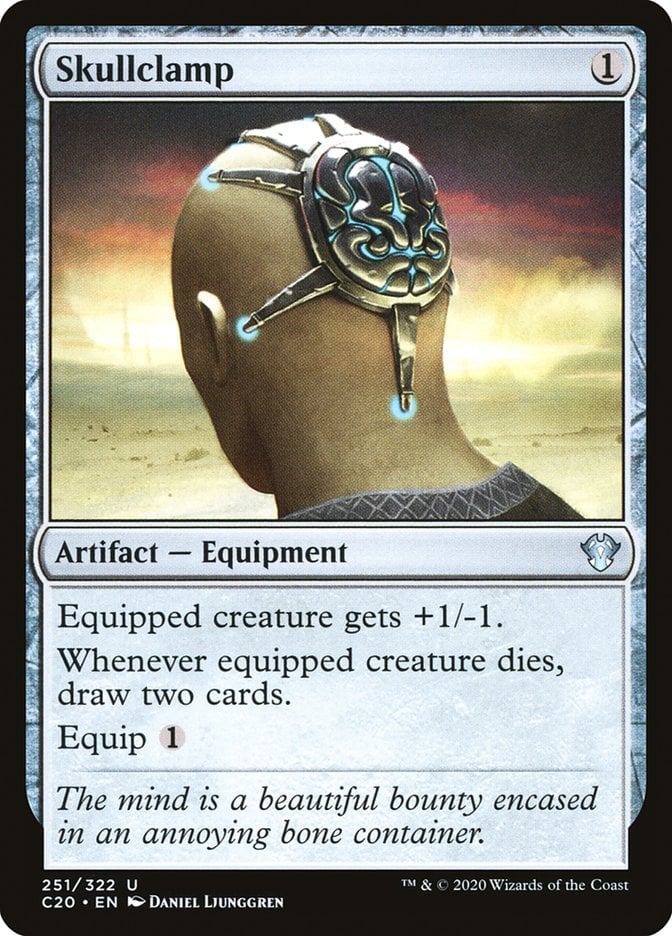
Anyone who thinks that Skullclamp should be legal in Modern has never played with Skullclamp. Affinity can equip it to any creature, sacrifice that creature to Arcbound Ravager, and get a +1/+1 counter and two cards. At the time, Affinity also had access to Frogmite and Myr Enforcer; they had no shortage of cheap creatures, or creatures they wanted to sacrifice for value. And it wasn’t even the only deck that could take advantage of Skullclamp: Elves naturally has a lot of mana and 1/1 creatures, too. Drawing so many cards for such a low investment has been enough to keep Skullclamp out of Modern for the last 10 years.
Umezawa’s Jitte
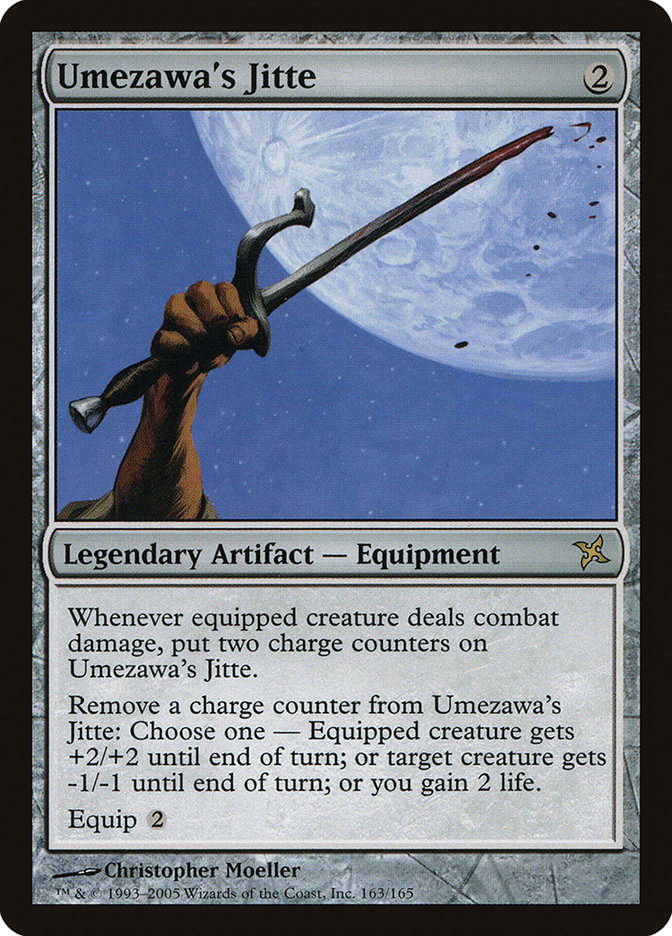
Umezawa’s Jitte is a surefire way to make combat a miserable experience. Even if both players have a Jitte, as soon as one player pulls ahead, things will snowball out of control. Killing creatures, pumping your own, and gaining life makes it basically impossible to effectively race a Jitte. For the sake of keeping combat interesting, Wizards decided to ban Umezawa’s Jitte before it could cause any problems.
Fast Mana
From the format’s inception, Wizards has wanted to make sure Modern games last at least four turns. One of the easiest ways for games to end early is for players to make excess mana and cast powerful spells ahead of schedule. As a result, many cheap mana accelerators have been banned over the years.
Cloudpost

Cloudpost is one of two lands with the Locus type, the other being Glimmerpost. In the early days of Modern, a deck called 12 Post used Cloudpost, Glimmerpost, and Thespian’s Stage to make piles of mana, usually ending the game with an early Emrakul, the Aeons Torn. One of Modern’s problems for the longest time was that there weren’t any powerful and cheap ways to disrupt opposing mana bases. This led to 12 Post ramping uncontested, before playing some haymaker that was often difficult to answer.
Eye of Ugin
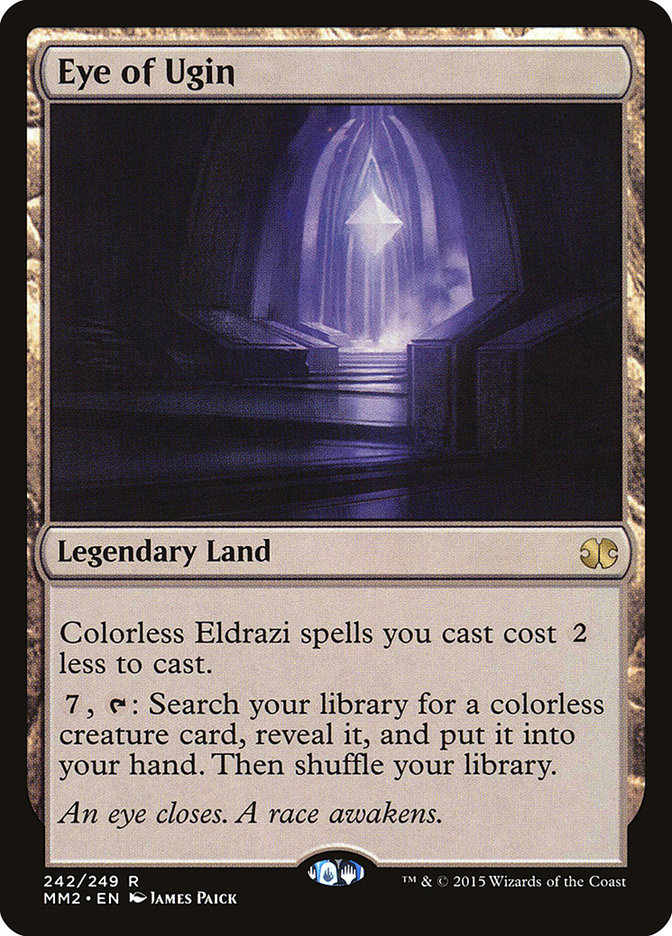
Eye of Ugin (better known as Cloudpost At Home) was banned several years after Cloudpost, at the end of Eldrazi Winter. This card didn’t really make waves in the format until Oath of the Gatewatch brought Eldrazi Mimic, Thought-Knot Seer, and Reality Smasher into Modern. It didn’t take players long to figure out that, with eight lands that produced or reduced costs by two mana, you could play the powerful new Eldrazi on turn two or three. Eldrazi decks dominated Pro Tour Oath of the Gatewatch, prompting Wizards to ban Eye of Ugin.
Krark-Clan Ironworks

Krark-Clan Ironworks, better known as KCI, was once one of Modern’s most powerful and intricate combo decks. Using KCI, Myr Retriever, Scrap Trawler, and Mox Opal, you could produce infinite mana, then draw your whole deck with Pyrite Spellbomb and Ichor Wellspring. KCI was incredibly consistent and would routinely win the game on turn three or four. Needless to say, after a solid run as the best deck in Modern, Wizards banned Krark-Clan Ironworks.
Mox Opal
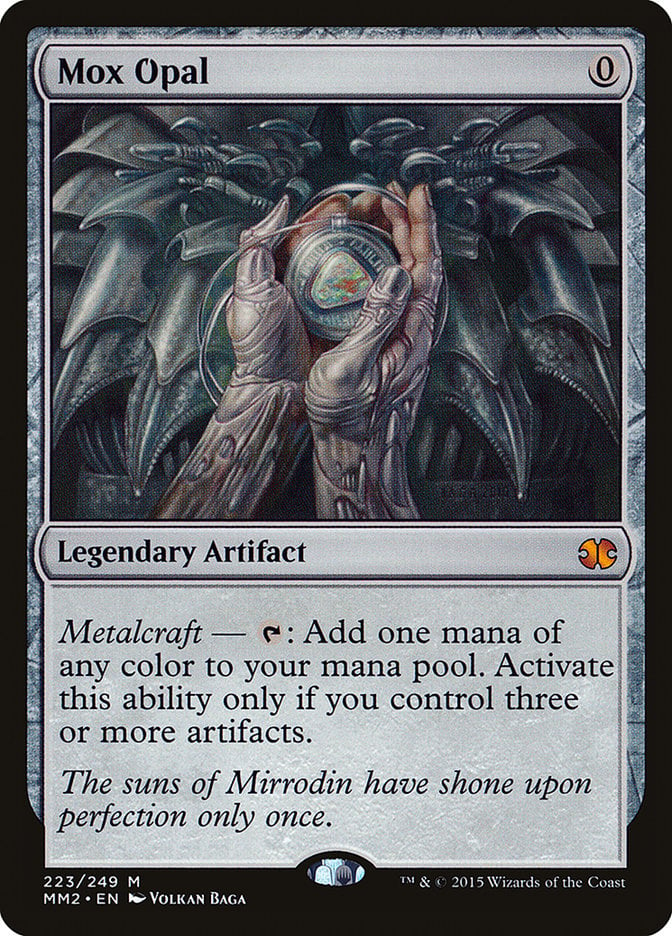
Mox Opal was at the center of many top decks during its time in Modern. Affinity, Eggs, KCI, Hardened Scales, and Whirza all had their time in the sun, thanks to this zero-mana accelerant. Eventually, Wizards must have seen the pattern, and Mox Opal was banned once and for all in January 2020.
Rite of Flame

In the early days of Modern, Storm was incredibly popular and powerful. Flusterstorm wasn’t legal in Modern at the time, so Mindbreak Trap was really the only recourse that players had to deal with storm spells. Wizards likely wanted to avoid a “two ships passing in the night” style of Magic, so they axed Rite of Flame shortly after Modern’s inception.
Seething Song
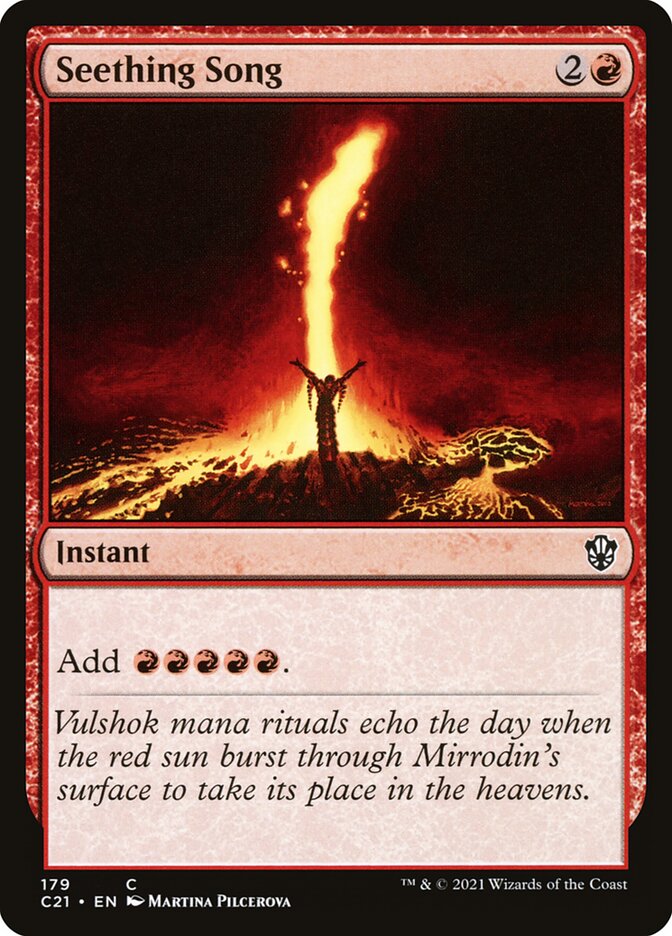
Seething Song, like Rite of Flame, was a Storm powerhouse. After Rite was banned, Storm was still nearly as good as it was before, so banning Seething Song was the logical next step.
Simian Spirit Guide
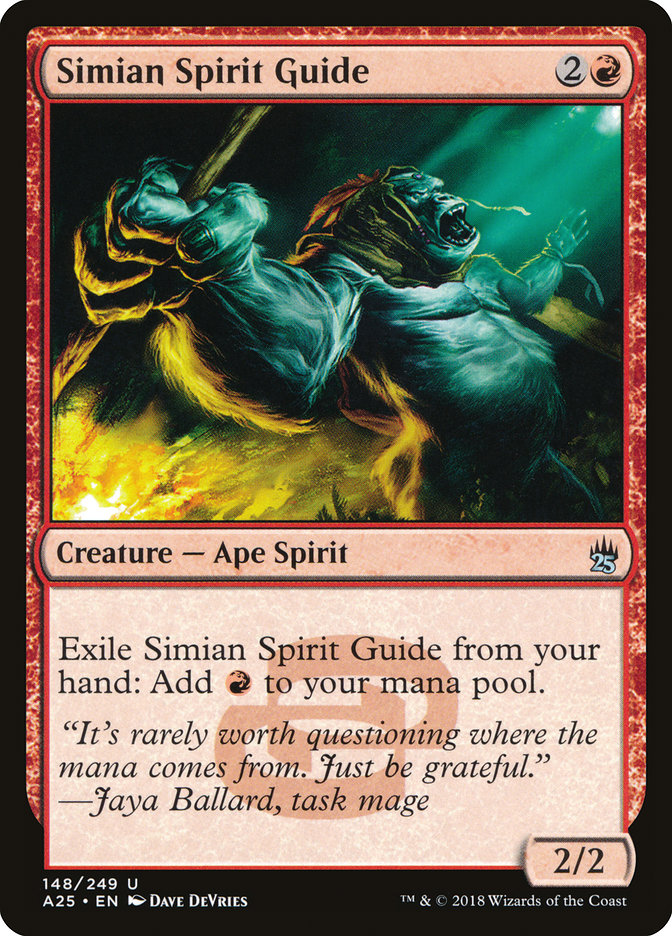
Simian Spirit Guide was a key accelerant in a handful of decks, such as Ad Nauseam, Eldrazi Tron, and Oops All Spells. Oops All Spells was the final nail in the coffin for Simian Spirit Guide, as it was routinely able to win the game on turn two or three. This card’s power level may not seem as high as some others on this list, but it just goes to show how powerful cheap acceleration can be.
Summer Bloom

Summer Bloom represents the peak of Amulet Titan’s power level. Two mana to put three lands into play tapped is incredibly powerful when you have turn one Amulet of Vigor. In that situation, not only is Summer Bloom free, but it generates mana, which is easy to convert into a Hive Mind or a Primeval Titan to end the game. Summer Bloom had to go in order to reel in Amulet Titan, which remained one of the best decks in Modern for a long time afterward.
Cards that Are Easily Broken
Some cards in Modern may look unassuming, but in a card pool this large, they can be easy to break. As new cards enter the format, these build-arounds often go from seeing little to no play to enabling some of the best strategies in Modern. As Modern has grown in popularity, the breakneck pace of innovation and the increase in cards entering the format have only created more opportunities to break niche cards.
Bridge from Below

Bridge from Below barely showed up in Modern until the advent of BridgeVine. Vengevine and friends were explosive, but ultimately too inconsistent to have staying power. Bridge from Below was ultimately banned when Hogaak, Arisen Necropolis and Altar of Dementia entered Modern with Modern Horizons, enabling mill wins with relative ease.
Field of the Dead
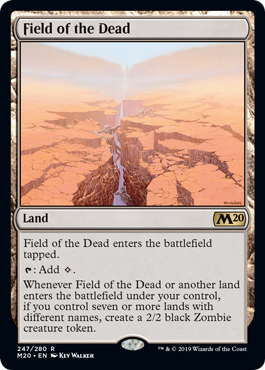
Field of the Dead was legal alongside Primeval Titan and Uro, Titan of Nature’s Wrath, which put a lot of Zombies into play well before turn seven. The Simic decks centered around Uro and Field of the Dead would often play Growth Spiral as well, so Field of the Dead could come online as early as turn five. Only the fastest aggro decks could hope to beat a Field of the Dead deck consistently, which wasn’t a healthy development for the format.
Mycosynth Lattice
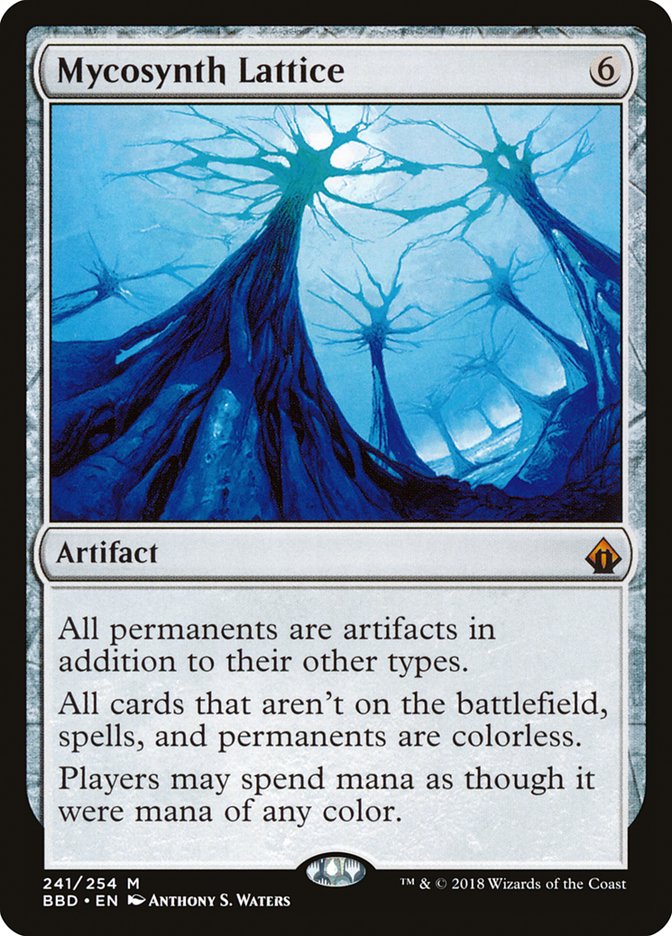
Mycosynth Lattice wasn’t on anyone’s radar before the release of Karn, the Great Creator. Lattice makes every permanent an artifact, and Karn turns off all activated abilities of artifacts, which means your opponents’ lands no longer produce mana. Throw in an Ensnaring Bridge to stop any attackers already on the board, and you’ve locked your opponent out of the game.
Second Sunrise

Second Sunrise was a key ingredient in a combo deck called Eggs, best described as “Longform KCI.” Eggs would sacrifice Chromatic Sphere, Chromatic Star, and other cheap artifacts to draw cards, then get them all back from the graveyard with Second Sunrise. The combo was repetitive and slow, often resulting in 10+ minute turns. Second Sunrise was both easy to break and resulted in repetitive and unfun gameplay.
Tibalt’s Trickery

Tibalt’s Trickery is one of the fastest cards banned in Modern history. The original versions of Tibalt’s Trickery decks were Throes of Chaos decks with one copy of Emrakul, the Aeons Torn. Throes of Chaos would always cascade into Tibalt’s Trickery, which would counter Throes and cast an Emrakul, giving you an extra turn to annihilate your opponent’s board.
Cards With Excessively High Power Level
Now we get to the cards that were misses on a balance axis. These cards are what happens when the power level knobs get turned just a little too high.
Birthing Pod

In its time in Modern, Birthing Pod has been both the best combo deck and the best value deck. The combo version of Birthing Pod centered around Viscera Seer + Melira, Sylvok Outcast + either Kitchen Finks or Murderous Redcap. As the power level of creatures rises over time, Birthing Pod only gets that much better. If it remained a mainstay of Modern, it would restrict the future design space of creatures too much — therefore, it had to go.
Blazing Shoal
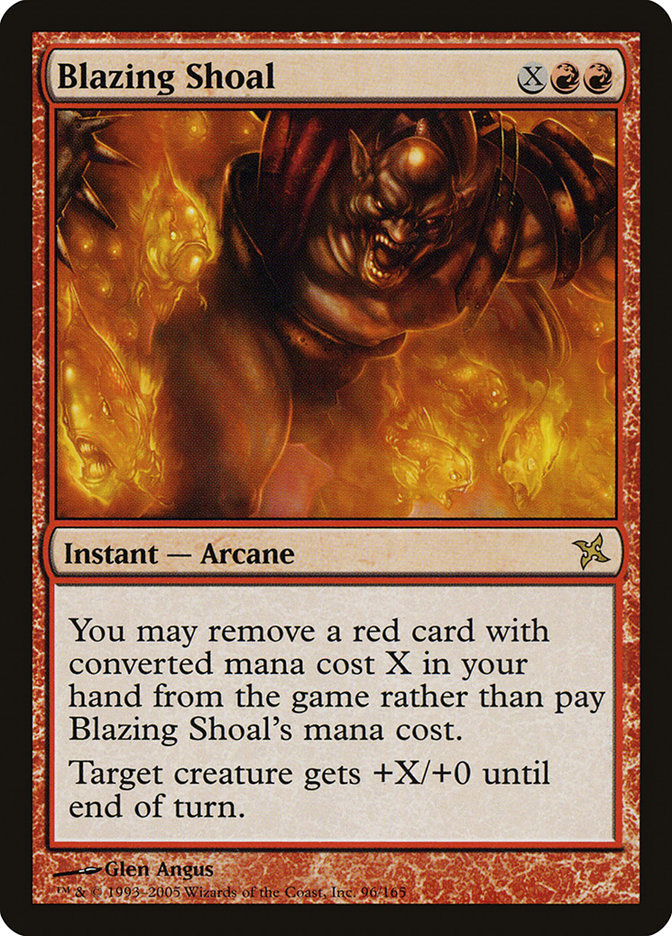
Blazing Shoal was a key ingredient in the first and most explosive version of Infect. Believe it or not, these decks were mono-blue, killing with Blighted Agent and Inkmoth Nexus. You could use Progenitus, Reaper King, or Dragonstorm to give your infect creature enough power to win in one hit. Shortly after Pro Tour Philadelphia, Wizards decided that hard-to-block turn two kills were simply too strong.
Deathrite Shaman
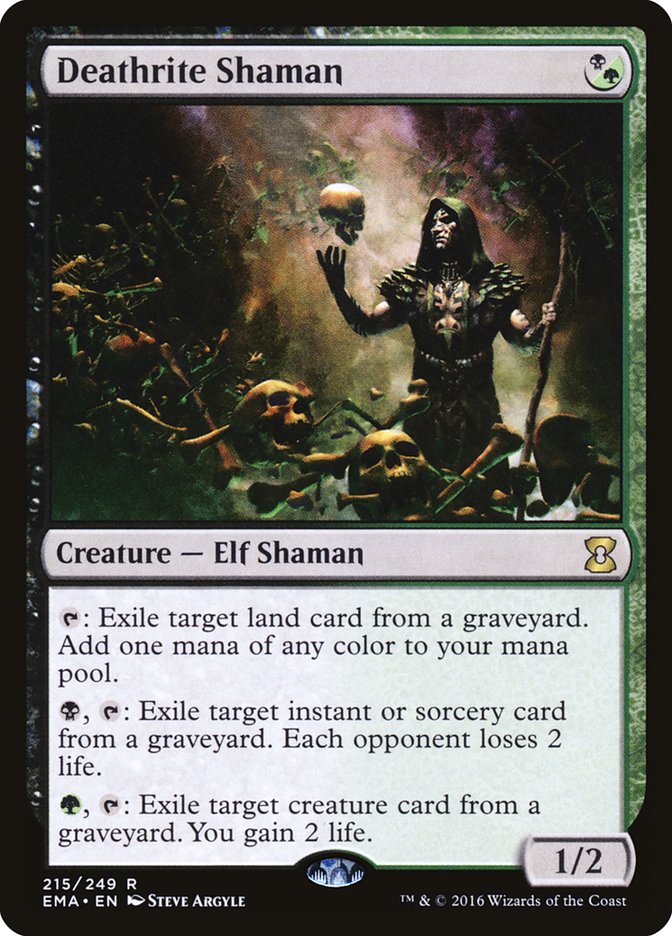
Deathrite Shaman was the original Ragavan. Often referred to as the one-mana planeswalker, Deathrite Shaman did it all: making mana, gaining life, and hurting the opponent, all while providing incidental graveyard hate. Deathrite Shaman‘s hybrid mana cost made it too easy to include in too many decks. It’s far too much utility for a one-mana card, and much too powerful for Modern.
Hogaak, Arisen Necropolis

Ah, Hogaak — the scourge of Modern Horizons. For what it’s worth, the original Modern Horizons set was a home run, with the exception of Hogaak and a couple other cards. Hogaak dominated Modern in both its original combo iteration and the “fair” version once Bridge from Below was banned. Modern simply wasn’t ready to deal with a creature that big, that quickly, and that resilient to common removal spells.
Oko, Thief of Crowns

It is hard to overstate the sheer dominance of Simic Midrange when Oko was released in Throne of Eldraine. Players had all sorts of questions about Oko, such as:
“Why does he turn creatures or artifacts into elk?
“Why does he have a +2 and a +1 instead of a -1?”
“How can a three-mana planeswalker have six loyalty the turn you play it?”
They’re all good questions, and all highlight Oko‘s undeniable power level. Oko is widely recognized as the best planeswalker event printed, and Modern simply wasn’t equipped to deal with him.
Uro, Titan of Nature’s Wrath
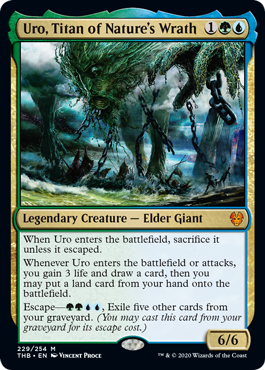
Uro, Titan of Nature’s Wrath is perhaps one of the best value-oriented creatures ever printed. Gaining life, drawing cards, and putting lands into play — how big can this creature be for three mana? A 1/1? Oh, wait… After dominating Modern alongside Field of the Dead and Urza, Lord High Artificer, Wizards said enough was enough and banned the powerful Titan.
Cards that Add Too Much Consistency
Looking back through the history of Modern, it would seem that Wizards is okay with powerful or fast combo decks, as long as they don’t reach a certain threshold of consistency. In our last section, we’ll cover the cards that made it too easy for combo decks to go off.
Arcum’s Astrolabe

Arcum’s Astrolabe may be the least offensive-looking card on the banlist, but I assure you that its crimes are numerous. Long story short, this card enabled Snow decks to stretch their mana bases to seemingly impossible lengths. When you can run Blood Moon and Cryptic Command in a deck with eight basic lands, something’s very wrong.
Dig Through Time
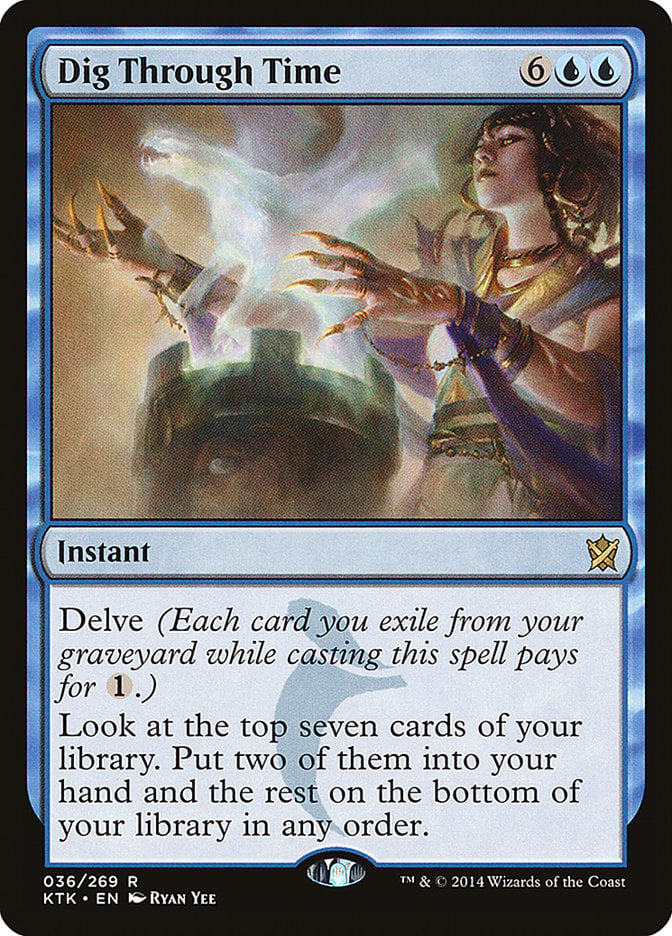
Dig Through Time made just about every deck too consistent. Scapeshift, Splinter Twin, Storm, and Ad Nauseam all used Dig Through Time to find whatever piece they needed to win the game. At the end of the day, Dig Through Time enabled too many decks to do their thing too easily.
Faithless Looting
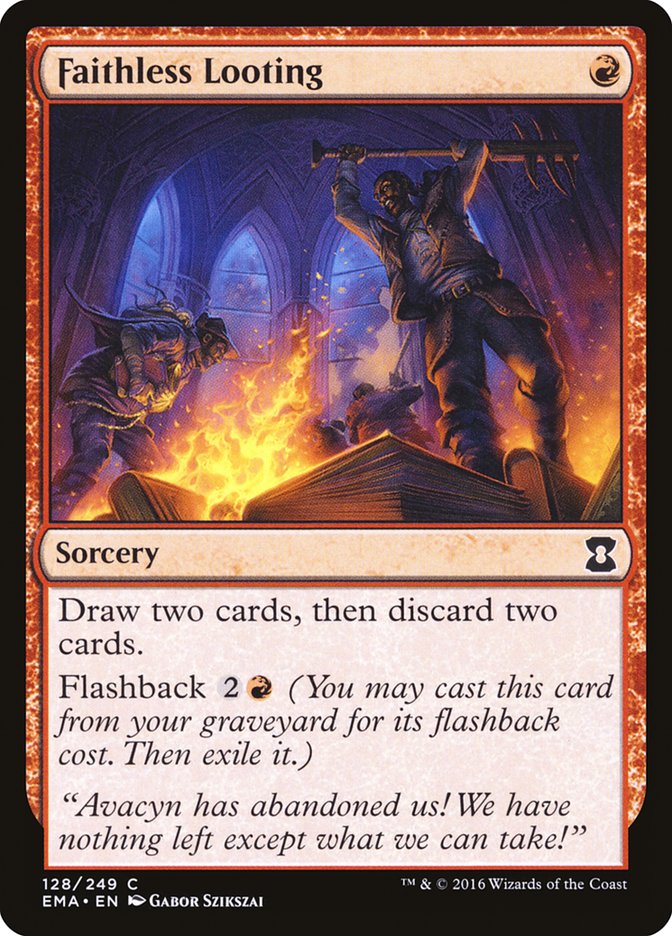
I view Faithless Looting in a similar light as Mox Opal. They were both centerpieces of a handful of problematic decks for their long tenures in Modern, and both were legal for much longer than was reasonable. And just like Mox Opal, Faithless Looting appeared in a lot of powerful decks before a pattern started emerging. It fueled Dredge at its height during the Golgari Grave-Troll era, along with Grishoalbrand, Arclight Phoenix, and Hogaak decks. One mana is just too little to pay for the kind of consistency and speed this card provides.
Gitaxian Probe

Gitaxian Probe highlights the problems with the Phyrexian mana mechanic. In particular, one-mana spells that cost Phyrexian mana are dangerous, because they’re almost always free spells. While there are many one-mana Phyrexian spells out there, Gitaxian Probe draws a card for two, which is a bit too attractive for too many decks. Thing in the Ice decks loved it; Infect played it both for information and to fill the graveyard for Become Immense; Death’s Shadow decks want to lose life, anyway. When one card with such a low cost enables so many strategies, it usually isn’t healthy for Modern.
Green Sun’s Zenith

Cheap tutors are often dangerous in Magic. Green Sun’s Zenith is a cheap tutor that shuffles itself into your library for another go. A fairly common opening is casting Green Sun’s Zenith on turn one to find Dryad Arbor — a one-mana ramp spell. Chord of Calling was a Modern staple for almost a decade, and most of the time, it’s a worse Green Sun’s Zenith. In my opinion, Green Sun’s Zenith is among the safer cards on this list to unban, with the caveat that Dryad Arbor gets banned in its place.
Mystic Sanctuary
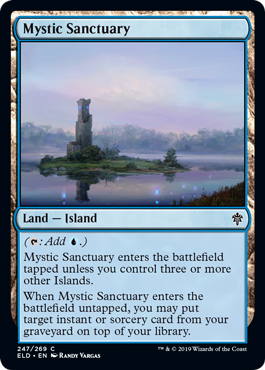
Any blue fetch land can represent a Mystical Sanctuary. And when every Mystic Sanctuary represents a spell, control decks seemingly never run out of gas. Needing three other Islands in play isn’t much of a deterrent for a deck that’s already playing Cryptic Command. In fact, if you bounce your Mystic Sanctuary with Cryptic Command, you can replay it and put Cryptic Command back on top of your library. Turns out a Cryptic Command every turn is all it takes to win the game sometimes.
Once Upon a Time
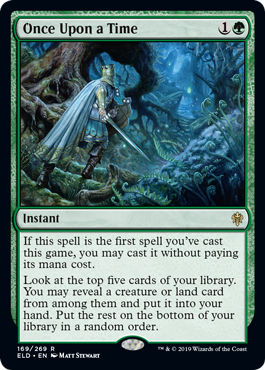
Once Upon a Time was much closer to Once Upon Every Time. A free look at the top five cards of your deck and a chance to put Primeval Titan into your hand is wildly powerful. But wait, there’s more! Turn one Once Upon a Time plus Amulet of Vigor was a recipe for a turn three win in Amulet Titan decks, and it made turn three Tron even more achievable. Every green deck got to do what it wanted to do in almost every game, so it was time to close the book on this card.
Ponder and Preordain
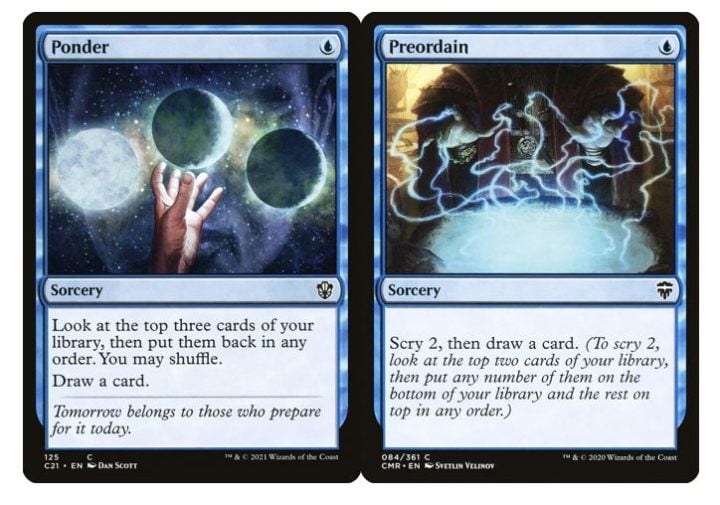
Ponder and Preordain make up two-thirds of the holy trinity of cantrips in Legacy, along with Brainstorm. As good as these cards would be in fair blue decks, they’re even better in almost every combo deck. Card selection matters so much more when you’re looking for specific threats than when you’re searching for answers, especially when the balance favors threats, as it does in Modern.
Treasure Cruise
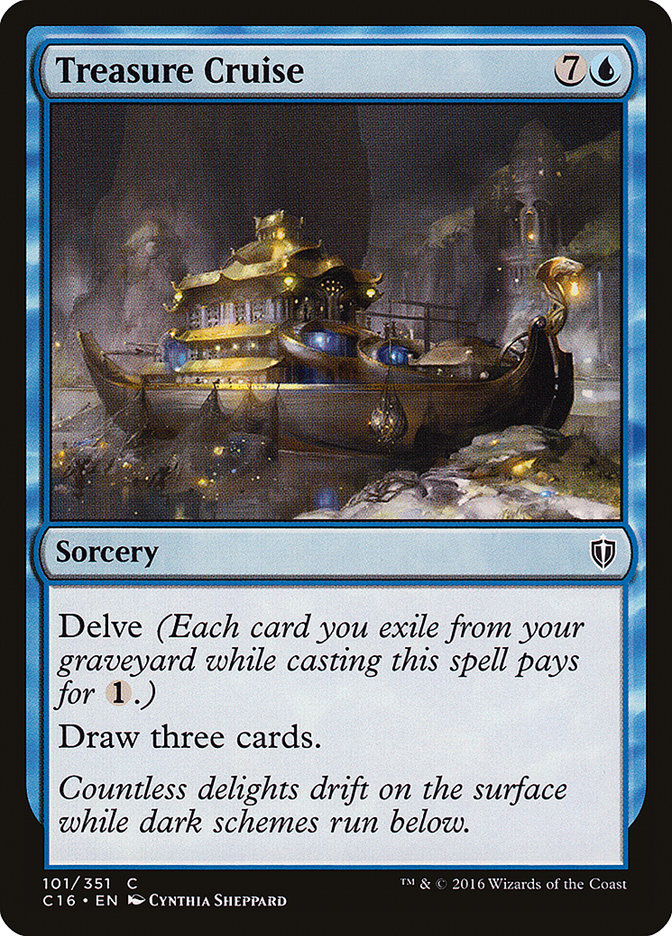
Treasure Cruise was banned at the same time as Dig Through Time, and for a similar reason. A + B combo decks preferred Dig Through Time, but most other decks wanted the raw card advance Treasure Cruise provided. The two delve draw spells became so ubiquitous that even Burn was splashing for Treasure Cruise. Banning one without the other didn’t make much sense, so Wizards didn’t hesitate to ban them both.
“Competitive Diversity”
Splinter Twin
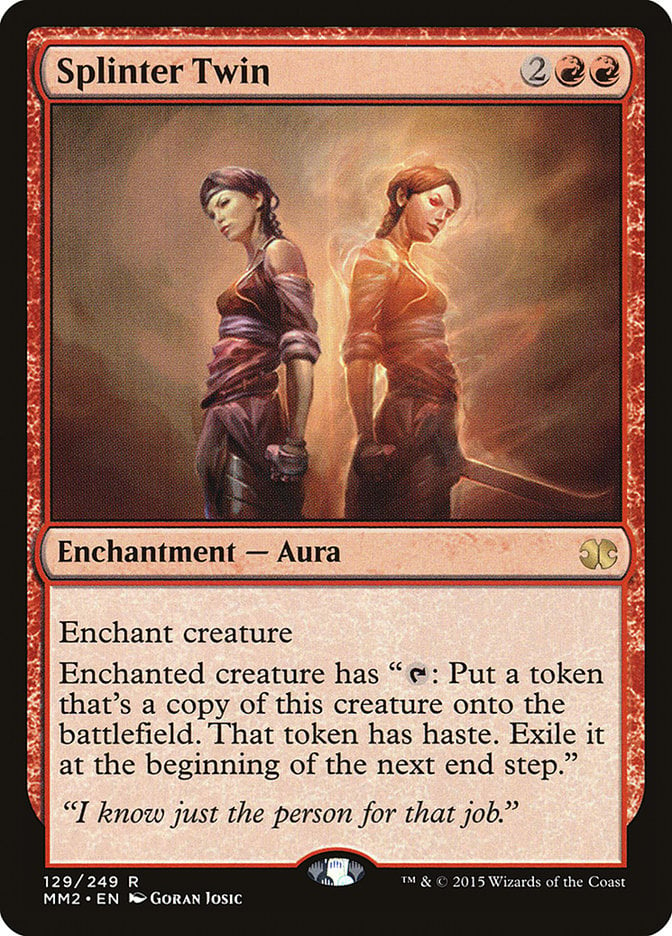
Once Modern’s premier combo deck, Splinter Twin was either beloved or maligned depending on who you asked. Splinter Twin was the litmus test for the format; you needed to have a plan for it if you wanted to be competitive. Players loved Twin because it could play like a combo deck, a control deck, or a tempo deck. But the draw to Splinter Twin was also its downfall; it began to break 10-15% of the metagame — which, in Modern, is a huge share for a single deck.
This last section is the final resting place for Splinter Twin, a fallen hero of Modern. May we see you again one day.
If you’re just picking up Modern, hopefully this guide has answered any questions you may have about the format and its banlist. I’m sure that we’ll eventually see more cards added, but right now, the metagame is healthy, and I don’t expect a ban any time in the near future.
If you’re looking for your first Modern deck, we recently published a guide to the best decks for beginners. You can also keep up with the format with our weekly articles, including tier lists, deck guides, and more.
As always, you can find me on Twitter at @RappaciousOne for questions and comments.

Michael Rapp is a Modern specialist who favors Thoughtseize decks. Magic sates his desire for competition and constant improvement.

